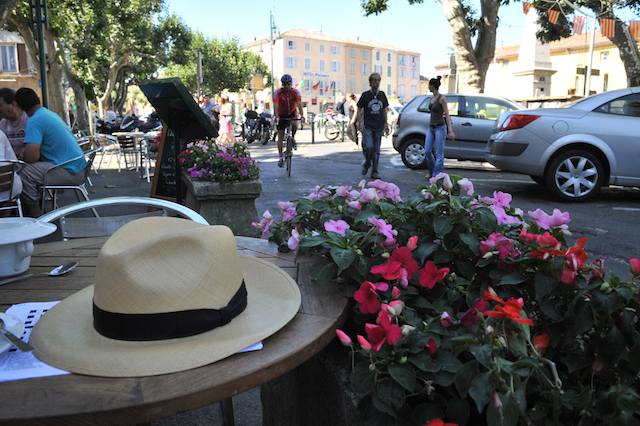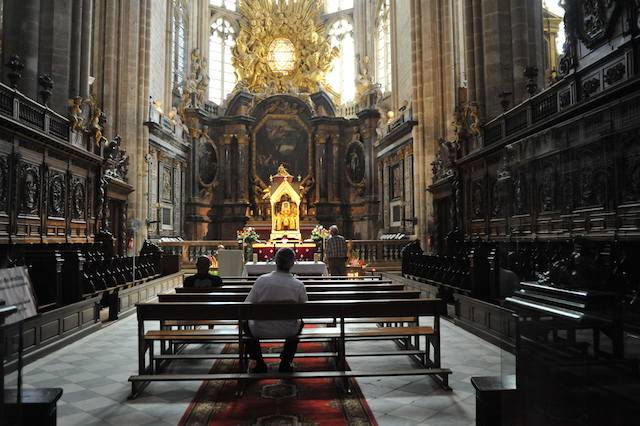Flickr version here.
“The man who is tired of London”, said Samuel Johnson, “is tired of life”. The same applies to Provence. We’ve been coming here every summer for years, and yet over the English winter the memory of its magic fades, with watercolours exposed to sunlight. And then we step out of the plane and are struck by the wall of scented heat, the chorus of cicadas, the azure sky, the amazing umbrella pines and palm trees and — whoosh! — it’s back.
Yesterday we decided to eschew motorways and big roads and lit out for the hills, picking our way along smooth, virtually-deserted country roads that snaked through valleys and woods and ochre-tinted villages baking in the afternoon sun to St Maximin-la-Ste Baume where we stayed in a converted Dominican monastery next to the basilica of Sainte Marie Madelaine.
This is a vast church, as big as some English cathedrals, built in the 14th century to house the skull of the woman who is supposed to have been one of Christ’s followers. According to the legend, she was the sister of Lazarus (he of the great comeback), was driven from Jerusalem by persecution and wound up in Provence, where she retired to a grotto in the Sainte Baume mountains we had driven through. She died, it seems, in the arms of St Maximin — the Bishop of Aix — in the town to which he gave his name and where we had found lodgings for the night.
Flickr version here.
The relic is a blackened skull encased in a hideous gilt enclosure on a sedan-chair apparatus — which suggests that it is paraded around the streets from time to time, no doubt accompanied by clerics in elaborate frocks. The size and magnificence of the basilica reminds one that possession of a high-class relic with provenance linking it back to Christ must have been the basis for a great business model in the Middle Ages. Just imagine it: all those pilgrims; all those indulgences to be sold. And just think of the spin-off merchandising opportunities.
Not that the merchandising opportunities were confined to the Middle Ages. In recent times, Mary has become a staple of bestselling fiction: think of the role she plays in, for example, The Da Vinci Code.


